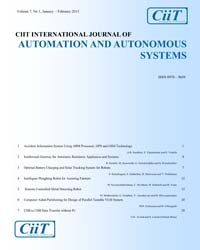Web 2.0 Based Classification of Extremist Videos in Online Video Sharing Sites Based on SVM and Content Based Video Retrieval
Subscribe/Renew Journal
Web 2.0 includes web-based communities, hosted services, web applications, social-networking sites, video-sharing sites, wikis, blogs, mashups and folksonomies. A Web 2.0 site allows its users to interact with other users or to change website content. It has also has helped extremists to spread their thoughts, ideas, resources and communicate among each other. The system proposed is to classify the extremist videos in online video sharing sites based on the user generated data. The classification of videos can be done in a multimodal fashion where we can combine the conceptual features of the video, i.e. the text features are combined with the visual features from the images using SVM (Support Vector Machine) classification. This multimodal classification will enhance the precision and efficiency of the system to the greater extent. In this paper we have proposed and implemented the classification based on the text features (User Generated Data, Tilte, Description) .Based on this idea three text features are concentrated for this purpose. They include lexical features, syntactic features and content specific features. We use Information gain for feature extraction and support vector machine for classification of the videos. Along with this technique the CBVR is also added with frame segregation according to the specific timeline. This increases the efficiency of the system from 90-95%. This paper describes the system which can help intelligence analysts to counter the threats posed by the extremists in the web 2.0. This system also helps the online video sharing sites to identify the extremist videos and block the videos before the user views.
Keywords
Extremists Video, Intelligence Analysts, Video Sharing, Web 2.0, CBVR.
User
Subscription
Login to verify subscription
Font Size
Information



